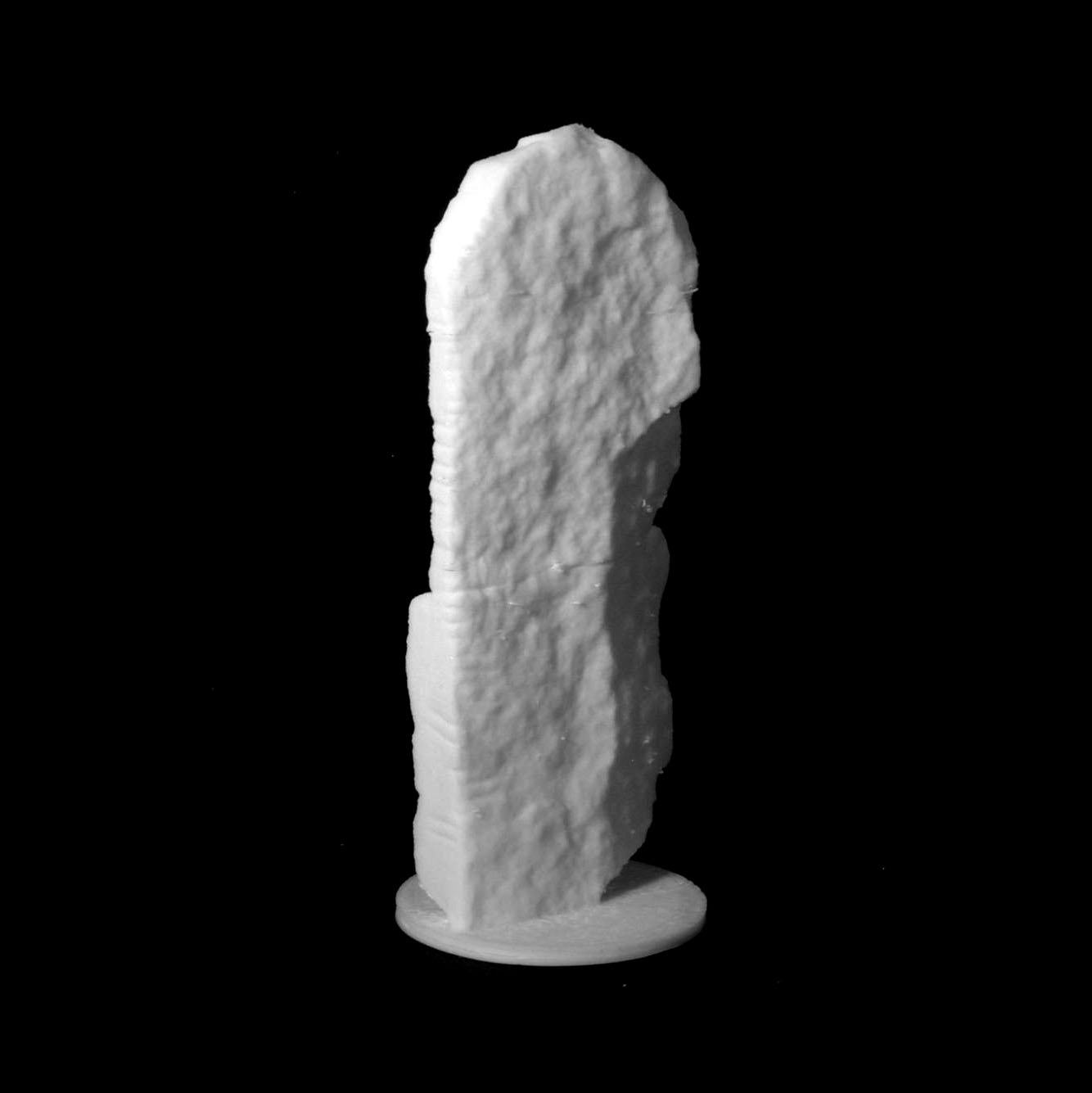
Ogham Stone - Monataggart
myminifactory
TitleCIIC 119. Monataggart II Monument, Co.Cork ArtistUnknown DateUnknown MediumSandstone Dimensions0.91 x 0.39 x 0.11 metres Accession #National Monuments Service Record Number - CO061-022003 CreditOgham 3D Site Type Souterrain Description Site Possible souterrain of 'about eighteen feet in length, five feet in width and five in depth ...... at the end of which were some wood ashes and the appearance of a small flue' (Quarry 1896, 382). Monument 1 of 4 Ogam stones re-used in the construction of underground chambers (possible souterrain and possible long cist burial) at this site. 1 of 2 'upright stones' in souterrain (Quarry 1896, 382). Clayslate, broken in two, 0.91m x 0.39m x 0.11m (converted fromMacalister 1945, 118). In October 2011 Kaaren Moffat, a UCC PhD student researching ogham stones, re-discovered yet another fragment from this stone. Macalister had only noted 2 fragments but, after checking the measurements of the fragments against Macalister's measurements, Kaaren realised that the third piece had broken away after Macalister had surveyed it. The third fragment is in fact the back of the top half and has the missing ends of the consonant scores (MQD). It has now been scanned and will shortly be added to the 3D model. Text Up on one angle. 'The first name is repeated in minute pinscrapes underneath its formal presentation in the finished inscription: presumably the lapidary's memorandum of the name which he had been commissioned to carve'(Macalister 1945, 119). Transcription DALAGNI MAQI DALI Translation 'Of Dallán son of Dall' Commentary This is one of the inscriptions listed by McManus (1991, 93-4) to be among the earliest in the corpus showing no trace of vowel affection. It may be dated to the first half, or the early second half, of the fifth century(McManus 1991, 97). Dall 'blind' and diminutive suffix -agni (>-an(n), Dallán), cp. 230. Cloghanecarhane, Kerry D[...]A[.C.] AVI DALAGNI [MAQI C ...]) in an unidentified gentilic name (McManus 1991, 112). McManus (1991, p 112) notes this inscription as an example of the repetition of an element of the father's name in the son's. Locations Found In possible souterrain with 2 other Ogam stones (4th: 118. in possible long cist) in the townland of Monataggart, parish of Donoughmore, barony of East Muskerry. The original location of this stone may be accessed via the National Monuments Service public map viewer on www.archaeology.ie. (GPS coordinates -8.787796,51.976513) Original Unknown Last Recorded National Museum of Ireland, Dublin. The present location of this stone may be accessed via the National Monuments Service public map viewer on www.archaeology.ie. (GPS coordinates -6.254558,53.340408) History of Recording Found in 1872 by Mr. Patrick Cogan (Brash/Quarry) References Brash, R.R. (1879): The Ogam inscribed monuments of the Gaedhilin the British Isles. London, pp 160-3. Macalister, R.A.S. (1945): Corpus inscriptionum insularum Celticarum, p 116, pp 118-9. McManus, D. (1991): A guide to Ogam. Maynooth Monographs 4, pp 65, 94, 107, 112. Power, D. et al (1997): Archaeological Inventory of County Cork. Volume 3: Mid Cork. Dublin, pp 169-70. Quarry, J. (1896): 'Prehistoric remains still remaining in the parish of Donoughmore', JCHAS 2, pp 381-5, p. 382. Websites and Online Databases Gippert, J. (1997): Thesaurus Indogermanischer Text-und Sprachmateriale. Ogam-Inschriften. University of Frankfurt: titus.uni-frankfurt.de/ogam/ CISP (Celtic Inscribed Stones Project):www.ucl.ac.uk/archaeology/cisp/database/ https://ogham.celt.dias.ie/stone.php?lang=en&site=Arraglen&stone=145._Arraglen&stoneinfo=description#MAC1945 http://ogham.celt.dias.ie/ ham stones are among Ireland's most remarkable national treasures. These perpendicular cut stones bear inscriptions in the uniquely Irish Ogham alphabet, using a system of notches and horizontal or diagonal lines/scores to represent the sounds of an early form of the Irish language. The stones are inscribed with the names of prominent people and sometimes tribal affiliation or geographical areas. These inscriptions constitute the earliest recorded form of Irish and, as our earliest written records dating back at least as far as the 5th century AD, are a significant resource for historians, as well as linguists and archaeologists.
With this file you will be able to print Ogham Stone - Monataggart with your 3D printer. Click on the button and save the file on your computer to work, edit or customize your design. You can also find more 3D designs for printers on Ogham Stone - Monataggart.
